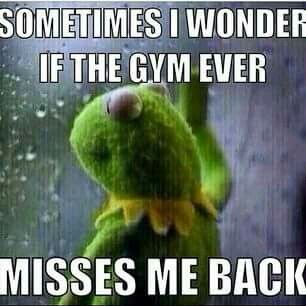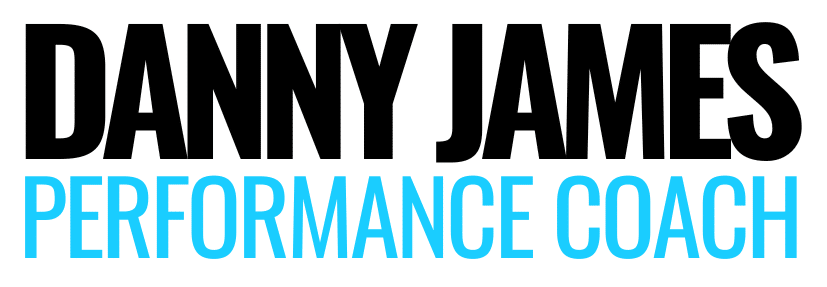Time away from the gym can be a frustrating experience, especially when forced. And as difficult as it is, returning to training after a break needs to be met with caution. You can make some wonderful gains if you come back the right way. So, let this be your ‘need to know’ guide for getting back to the gym after time away.
Gyms are edging towards opening up one of these days.
We don’t know when. But many of us are pacing our cages ready to return to training.
Most of us have been severely modifying workouts, or without them completely. And push-ups are getting really old.
So, while I can appreciate the rampage to get back to bending bars ASAP, it’s also important to play it smart. That begins by first understanding and accepting the reality of the situation.
We’ll talk about what happens to your gains after a lengthy spell away from our beloved iron-paradise. Then, we’ll cover exactly what to do with your programming when we finally start back up.
And let’s not forget, this hasn’t been any kind of regular break, either. This has been the damn Catalina Wine Mixer of breaks.
A global pandemic, no less.
Where stressors are significantly higher than, well…
Probably anything else, ever.
So, there are a lot of residuals we need to factor in, as well. Let’s dive right in and look at how to safely return to lifting weights after a long break.

Muscle, Strength, and Power Loss
Muscle loss likely won’t begin until around the 4-6 week mark of detraining. The average rate of muscle loss will be about 1.5% every month after that. Rate of loss will be slightly faster in the thighs compared with the arms.
More advanced lifters who have held onto their size longer, tend to take a little longer to lose muscle.
Strength loss seems to happen a little faster, unfortunately. Usually after about 2-3 weeks of detraining and more so in the legs compared with the upper body.
Estimated strength losses could be as much as 20% in only 10 weeks. Unlike with size, stronger lifters tend to experience a faster rate of strength loss.
One study showed strength athletes lost 6-9% of maximal strength and up to 17% of power output during 4 weeks of detraining.
Trained athletes involved in a heavy periodised plan, can lose between 6-12% of strength after 4-8 weeks of zero training.
Good news is that you will have lost even less if you were able to do some semblance of resistance training. Whether with bands or body weight, it doesn’t matter too much. So long as you were able to push with efforts close to failure.
And, research has shown that it takes far less training volume and intensity to maintain gains than it does to build them up.
As little as 1/3 the training volume loads at 70% 1RM should be plenty to maintain size and strength for 6 months.
Want another bonus?
Well, how about this:
After a period of detraining, you’re going to be very sensitive to the training stimulus.
Which means you won’t need anywhere near your usual volume or load to trigger a response. You’re going to be hyper-responsive. And, if you’ve lost any gains you’ll gain it back much quicker than when you first built it.
I hope you can see by now just how exciting this is.
If you’ve been out of the gym for a while there’s an opportunity here when those gym doors open up. To have some of the best gains that you’ve seen in a long time.
This also includes coming back from heavily modified or reduced training. Such as with the 2+ months of Covid-19 restrictions.
Getting Back To the Gym
Now that we’re getting back to the gym, it’s important to manage expectations.
The reality is that we’ve either been training with limited equipment or haven’t been lifting at all. It’s likely there’ll be a small loss of muscle size and strength as we discussed early.
As devastating as this might be, the last thing you want to do is go too hard too soon.
You’ll have a heightened sensitivity to loading. Anabolic pathways will have a lower threshold response to training. Which means for the first few months getting back to the gym, you’re going to make really fast progress. After the first 1-2 training blocks, progress will then begin to level off a little.
Related: Avoid Training Plateaus With the Right Amount of Variation
So, in order to make the most of that potential, we arrive at the next important step of our return to training approach:
Start small.
Sigh, I know.
Start back with less volume and load than normal because you’re not going to need very much to trigger an event.
So, make the most of this elevated anabolic response. And we can do this by not drowning the system with more training volume than it can recover from. Especially in those early days when also the stimulus of new exercises will be novel.
Simply start with half of the usual volume and keep the intensity of effort at around 6/10. This means you’ll probably perform 2 sets of each exercise and leave about 4 reps in the tank away from failure.
Over the first few weeks, you want to gradually increase sets and reps. Add 1 set per week and as many reps as still keeps you within the target intensity or RPE. You might also add small increments of load each week.
Either way, the goal is to work closer to a 9 RPE as the weeks progress. The best way to do this is by reducing the reps in reserve by 1 each week, working up to your peak between weeks 4-6.
Here’s an example:
Your Plan
Week 1 (introductory): 2 sets of each exercise, RPE of 5-6, using lighter loads than you had before.
Week 2: 3 sets, more reps, RPE of 6-7
Week 3: 3-4 sets, more load RPE of 7
Week 4: 4 sets, more reps or more load RPE of 8
Week 5: 4-5 sets or more reps or more load RPE of 8 or 9
Week 6: Deload
Week 7: Start again from week 3
Starting with less training frequency and building up is another option. For example, start by training each body part twice per week and work up to 3-4x per week over the block. For whole-body routines, start training with less total training sessions at first

Step number 3 is to manage soreness and recovery.
Most people treat soreness as a badge of productivity, and recovery like a red-headed stepchild. But, although subjective, soreness can be a rough gauge of whether you’ve hit the mark or not.
You can expect to be a little sore, even with a drastically reduced workload.
But remember, it’s not only the tension we’re returning to. It could also be the type of tension or exercise that’s also new. For example, returning to the bench press after you’ve spent a couple of months doing push-ups, instead.
Generally, the pecs, hamstrings, and adductors can experience the most soreness. And any area that gets hit with tension in lengthened positions.
Basically, if you’re getting debilitating soreness you’ve likely done too much too soon and will need to tone it down.
And, while we’re on that note…
If your first training program back somehow includes the acronyms WOD, AMRAP or EMOM, then you definitely need a new plan. A program like this is likely going to be way more intense than is necessary or productive at this point in time.
Returning to training after a break can be an exciting time in one’s lifting lifespan. Especially in this strange post-COVID era.
Take your time, listen to your body and keep your long-term progress in mind.
Now go play!
P.S. Part 2 dives into the impact of psychological stress on recovery, performance, and injury risk. You will be shocked at what I found and it’s well worth checking out. Here.
References
- Muscular Characteristics of Detraining in Humans. Mujika and Padilla, 2001.
- Exercise Dosing to Retain Resistance Training Adaptations in Young and Older Adults. Bickel, et al. 2011
- Strength and Skeletal Muscle Adaptations in Heavy-Resistance-Trained Women After Detraining and Retraining. Staron, et al. 1991
- The Development, Retention and Decay Rates of Strength and Power in Elite Rugby Union, Rugby League and American Football: A Systematic Review. McMaster, et al. 2013.
- Detraining and Tapering Effects on Hormonal Responses and Strength Performance. Izquierdo, et al. 2007
- Velocity Loss as a Critical Variable Determining the Adaptations to Strength Training. Pareja-Blanco, et al. 2020
- Comparison of Muscle Hypertrophy Following 6-Month of Continuous and periodic Strength Training. Ogasawara, et al. 2013
- mTOR Signalling Response to Resistance Exercise is Altered by Chronic Resistance Training and Detraining in Skeletal Muscle. Ogasawara, et al. 2013


[…] Returning to Training After a Break […]
[…] been yammering on about how to come back to the gym when the dust settles. But today I want to talk about the other side of that coin. Namely, […]
[…] Returning to Training After a Break […]
[…] were also required to have not trained for four months before the study. So they would have been very sensitive to the training stimulus. […]